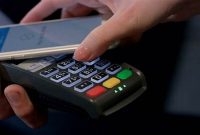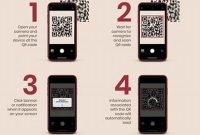If you’re tired of carrying cash around and constantly fumbling with cards at the checkout, using your phone for payments might be the solution you’ve been looking for. With technological advancements, making payments through your phone has become a secure and convenient option that allows you to leave your wallet at home. From mobile wallets to contactless payments, this guide will walk you through everything you need to know about using your phone for payments.

How Does Phone Payment Work?
Phone payment is a convenient and safe way to make transactions using mobile devices. With this payment method, users can carry out transactions such as purchasing goods and services, paying bills, or transferring funds to another account. Here’s how phone payment works:
Setting up a Payment Method
To get started with phone payments, you need to set up a payment method on your device. There are two ways to do this:
- You can link your smartphone to your bank account by downloading your bank’s mobile application. You will be prompted to enter your bank account details and other personal information to authenticate the account.
- You can also use a mobile wallet application. You will need to download the mobile payment application, enter your bank account or credit card information and authenticate it.
Making Payments
Once you have set up your payment method, you can make payments in two ways:
- You can pay an individual by entering the recipient’s phone number or email into the mobile payment application. The recipient will receive a notification and have to authenticate the payment before it’s processed.
- You can also make payments for goods and services at participating stores. The process is similar to swiping a traditional credit card. However, instead of swiping, you use your mobile device to scan or tap the store’s QR code.
After making the payment, you will receive a confirmation message on your device. The payment is then processed and transferred to the recipient’s bank account.
Which Phones Support Payment Methods?
As mobile technology continues to advance, more and more smartphones are offering payment methods through popular mobile wallet applications such as Apple Pay and Google Wallet. While most modern smartphones support these payment methods, it is important to ensure your device is compatible before attempting to set up payments.
Apple Pay
Apple Pay is currently available on most of the newer Apple mobile devices, including the iPhone X, iPhone 8 / Plus, iPhone 7 / Plus, iPhone SE, and Apple Watch Series 3. These devices are equipped with an NFC antenna that enables the device to communicate with payment terminals. Additionally, Apple Pay can also be used on the iPad Air 2, iPad Pro, and iPad Mini 3 or later models, as well as on the MacBook Pro with Touch ID.
Google Wallet
Google Wallet is available on many Android devices that run version 4.4 KitKat or later. In addition, Google has recently introduced the Google Pay app which consolidates both Google Wallet and Android Pay in one platform. This app is compatible with most new Android devices.
- Samsung Pay: Samsung Pay is another mobile payment system which is compatible with Samsung smartphones that run Android 4.4.4 “KitKat” or later. Samsung Pay uses both NFC and MST (Magnetic Secure Transmission) technologies that increase the compatibility of the company’s metal phones with payment terminals that only support magnetic stripe cards.
How Do I Set Up Phone Payment?
Using your phone to make payments is becoming more popular as technology advances. Mobile payments help make transactions more secure and convenient, allowing you to pay for goods and services at any time and from virtually anywhere. However, before you can make phone payments, you need to set up an account and link it with your bank card. Here’s how to set up phone payment:
Download and install a mobile wallet app
The first step in setting up phone payment is downloading and installing a mobile wallet app. A mobile wallet app is an application that allows you to manage your bank accounts, credit cards, and other payment options from your phone. It acts as a virtual wallet, connecting you to your bank accounts and enabling you to make digital payments.
There are several mobile wallet apps available that you can download from app stores such as Google Play and Apple App Store. Some of the popular mobile wallet apps include Apple Pay, Google Pay, Samsung Pay, PayPal, and Venmo. Once you’ve downloaded and installed the app, you can start the registration process.
Add your credit or debit card information
The next step is to link your bank card to your mobile wallet app. This allows you to use your phone to make payments using your bank account or credit card. You’ll need to provide the app with your bank card details such as the card number, expiration date, and security code. The app will use this information to connect your bank account with your mobile wallet app.
Make sure to enter your bank card information carefully to avoid any mistakes that may lead to payment errors. Double-check your card details before submitting them to ensure that they are accurate and up-to-date.
Verify your identity and payment details
After adding your card information, the mobile wallet app may require you to verify your identity. This involves providing personal identifying information such as your name, date of birth, and contact details that the app will use to confirm your identity. The app may also ask you to confirm your bank account information by making a small deposit or charge to your account.
It’s important to follow the instructions provided by the app during the verification process to ensure a smooth setup. If you encounter any issues during this step, make sure to contact the app’s support team for assistance.
Once you’ve completed these steps, you’ll be ready to use your phone to make payments. Simply open the app, select the payment option, and follow the prompts to complete the transaction.
Is Phone Payment Secure?
Phone payment is quickly becoming a popular and convenient way to pay for goods and services. But like with any new technology, people may be hesitant to try it out due to concerns about the security of their sensitive information. However, there are several security measures in place that make phone payments secure and safe to use.
Biometric Verification
One of the most significant security features of phone payments is biometric verification. This technology uses facial recognition, fingerprints, or even iris scans to confirm the identity of the user making the payment. Biometric data is unique to each individual and extremely difficult to fake, making it an effective way to protect against fraud. For example, if someone finds or steals your phone, they won’t be able to make any payments without your biometric data, which only you possess.
Tokenization
Another security feature is tokenization, which involves generating a unique code or token that is used to complete the payment transaction instead of using the actual credit or debit card number. This means that the retailer never has access to your card number, making it much harder for hackers to steal your information. Plus, even if someone does manage to access the token, it won’t be of any use to them outside of that one transaction, since each token is unique and specific to that specific transaction.
Ensuring Payment Security
- Always use a strong, unique password for your phone payment app.
- Make sure your phone operating system and payment app are always up-to-date to ensure they have the latest security patches and features.
- Use a secure and trusted payment processor, such as Apple Pay or Google Wallet.
- Be cautious of scams, and do not click on any suspicious links or give out your personal information.
What are the Advantages of Phone Payment?
Phone payment has revolutionized the way people make transactions. It offers several advantages over traditional payment methods. These include:
Convenience
Convenience is the most significant advantage of phone payment. You can make transactions anytime, anywhere, without the need to carry cash or a payment card. All you need is your smartphone and an internet connection. Whether you are at home, in the office, or on the go, you can easily pay for goods and services with your phone. You no longer need to worry about carrying cash or forgetting your payment cards.
Speed
Another advantage of phone payment is speed. Transactions with a phone take only a few seconds to complete compared to traditional payment methods. You do not have to wait in long queues or wait for an ATM to become free. With phone payments, you can quickly complete transactions and move on with your day.
Flexibility
Phone payment offers flexibility to users. You can link multiple payment methods to your phone, such as credit cards, debit cards, and bank accounts. This provides more options and flexibility for making payments. Also, many phone payment apps offer rewards and cashback on transactions, which are not possible with traditional payment methods.
Security
Phone payments are secure. You do not have to provide your sensitive information like card numbers or CVV codes to merchants. Instead, you use a token or a one-time password, which is more secure because it keeps your card data and financial information safe. Also, if you lose your phone, you can easily block your payment apps and prevent fraud.
Cost Savings
Phone payments can save you money. Many phone payment apps charge little or no transaction fees. Also, since you no longer need to carry cash or multiple cards, you reduce the risk of theft or loss. This can save you significant amounts of money in the long run.
What are the Disadvantages of Phone Payment?
Even though mobile payment is generally a convenient option for consumers and merchants alike, it still has its downsides. Here are some of the disadvantages you need to know if you’re considering using your phone for payments:
Potential for technical issues or glitches
Like any other digital technology, mobile payment systems are not immune to technical issues or glitches. For instance, there might be delays or errors in processing your transaction. Connection problems, power outages, and software bugs can all cause disruptions to the system. If you encounter any of these issues, you might not be able to complete your payment right away, which can be inconvenient if you’re in a rush.
Lack of acceptance at some merchants or locations
Although mobile payment is becoming more widespread, not all merchants or locations accept it yet. This means you might not be able to use your phone to pay for some of your purchases. You might need to carry cash or a credit card as a backup, which can be inconvenient and defeat the purpose of using mobile payment in the first place.
Risk of losing or damaging mobile devices that store payment information
Mobile payment relies on storing your payment information on your mobile device. This means that if you lose your phone or someone steals it, they can potentially access your payment data as well. Additionally, mobile devices can be fragile and prone to damage, especially if you drop them or expose them to water. If your phone gets damaged, you might not be able to use it for mobile payment until you have it repaired or replaced.
Security concerns
Mobile payment can be vulnerable to fraud and cyber attacks. If an unauthorized party gains access to your payment information, they can use it to make unauthorized transactions or even steal your identity. Although mobile payment systems often have built-in security features and encryption protocols, you need to be vigilant about protecting your personal information.
Dependency on technology
Finally, mobile payment systems require a certain level of technical competence and connectivity. If you’re not familiar with using mobile devices or if you’re in an area with no mobile coverage or internet connection, you might not be able to use your phone for payments. As mobile payment becomes more widespread, however, these issues are likely to become less common overall.
Limitations on transaction amounts
One more disadvantage of using a phone for payments is that there are often limits on the amount of money that you can send or receive in a single transaction. For instance, some mobile payment apps may only allow transactions up to a certain dollar amount. This can be a significant inconvenience if you need to make large payments for goods or services.
Frequently Asked Questions
| Questions | Answers |
|---|---|
| Can I use my phone for payments anywhere? | Not all stores and establishments accept mobile payments, but the number is growing every day. If you’re not sure, look for the symbols or logos that indicate accepted payment methods. |
| Is it safe to use my phone for payments? | Yes, as long as you take the necessary precautions such as using a secure connection, software updates, avoiding public Wi-Fi, and enabling two-factor authentication. |
| What happens if my phone is lost or stolen? | Most mobile payment apps have security features like passcodes and the ability to remotely disable access in case of theft. However, it’s always a good idea to report the loss or theft immediately and monitor your account activity. |
| Do I need a certain type of phone to use this feature? | It depends on the app and the payment method. Some apps are exclusive to certain operating systems, while others may have restrictions on the type of device or version of the operating system. |
| How do I dispute a payment made through my phone? | If you notice a suspicious charge or error in your mobile payment app, contact the customer support for the app and your bank immediately. They will investigate the issue and work to resolve it as soon as possible. |
Thanks for Reading!
We hope this guide has been helpful in understanding how to use your phone for payments. With the rise of mobile banking, it’s becoming more accessible and convenient to make transactions without ever leaving your home. Just remember to take the necessary security measures to protect your account information. Come back soon for more informative articles about finance and technology!





